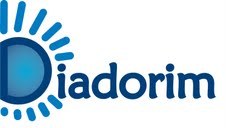BREEDING SITES OF AEDES AEGYPTI (LINNAEUS) (DIPTERA, CULICIDAE): A STUDY ABOUT THE CONTAINERS DIVERSITY IN DRY AND RAINY SEASONS IN A DENGUE-ENDEMIC CITY / CRIADOUROS DE AEDES AEGYPTI (LINNAEUS) (DIPTERA, CULICIDAE): ESTUDO SOBRE RECIPIENTES EM ESTAÇÕES SECA E CHUVOSA EM CIDADE ENDÊMICA PARA DENGUE
Palabras clave:
Aedes aegypti, arboviroses, dengue.Resumen
Abstract
Introduction: Mosquito-borne diseases are currently the biggest public health problem globally. Dengue fever infection is one of
the most important arboviral diseases in humans. Aedes aegypti is the most efficient vector for arboviruses because it is highly
anthropophilic, frequently bites, and thrives in close proximity to humans. Stored water in the containers for long period,
extended rainfall during the rainy season, and ambient relative humidity and temperature may favor the breeding of Ae. aegypti
and other mosquitoes. Objective: We assessed potential container breeding sites of Ae. aegypti in a peripheral area of a mediumsized
municipality of the State of Maranhão, Brazil. Methods: In this study, Ae. aegypti breeding sites were investigated in the dry
and rainy seasons, in 800 properties, located in peripheral area with poor urbanization and sanitation. Results: During the dry
season 35 (4.37%) residences showed the presence of immature forms of Ae. aegypti and in the rainy season we have found 82
positive residences (10.25%). The group of containers with higher positivity to immature forms of Ae. aegypti was water storage
containers, with values of 100% and 94.05% in the dry and rainy seasons, respectively. We found 3,529 immature forms in the dry
season and 17,827 in the rainy. Conclusion: Storage containers are the main recipients found with Ae. aegypti, and the most
productive for immature forms, markedly during the rainy season, and contribute to the maintenance of this vector in high rates
in this period, in addition to providing the right conditions for vector survival during the dry period, in this semi-arid region.
Keywords: Aedes aegypti. Arboviroses. Dengue.
Resumo
Introdução: As doenças transmitidas por mosquitos atualmente são os maiores problemas de saúde pública globalmente. A
infecção por dengue é uma das arboviroses mais importantes em humanos. O Aedes aegypti é o vetor mais eficiente para os arbovírus
porque é altamente antropofílico, pica frequentemente e prospera nas proximidades dos seres humanos. A água armazenada
em recipientes durante um longo período, a precipitação prolongada durante a estação chuvosa e a umidade e temperatura
ambiente podem favorecer a criação de Ae. aegypti e outros mosquitos. Objetivo: Avaliou-se potenciais criadouros do Ae. aegypti
em uma área periférica de um município de médio porte do Estado do Maranhão, Brasil. Métodos: Neste estudo, os criadouros do
Ae. aegypti foram investigados nas épocas seca e chuvosa, em 800 imóveis, localizadas em área periférica com baixa urbanização
e saneamento. Resultados: Durante a estação seca, 35 (4,37%) dos imóveis mostraram a presença de formas imaturas de Ae.
aegypti e na estação chuvosa foram encontradas 82 residências positivas (10,25%). O grupo de recipientes com maior positividade
para as formas imaturas do Ae. aegypti foi o de armazenamento de água, com valores de 100% e 94,05% nas estações seca e
chuvosa, respectivamente. Foram encontrados 3.529 imaturos na estação seca e 17.827 na estação chuvosa. Conclusão: Os
recipientes de armazenamento são os principais criadouros encontrados com Ae. aegypti, e os mais produtivos para formas
imaturas, marcadamente durante a estação chuvosa, e contribuem para a manutenção do vetor em altas taxas neste período,
além de fornecer as condições adequadas para a sobrevivência do vetor durante o período seco, nessa região do semiárido.
Palavras-chave: Aedes aegypti. Arboviroses. Dengue.
Descargas
Descargas
Publicado
Cómo citar
Número
Sección
Licencia
Direitos autorais Revista de Pesquisa em Saúde
Este obra está licenciado com uma Licença Creative Commons Atribuição-NãoComercial-SemDerivações 4.0 Internacional.







